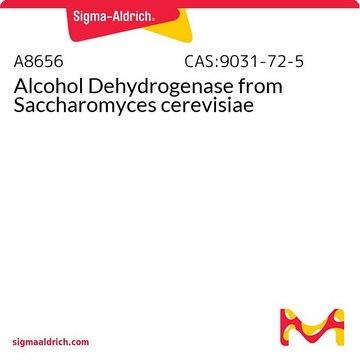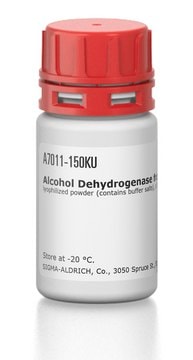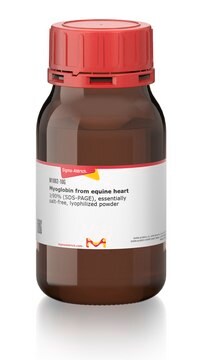E6126
Enolase from baker′s yeast (S. cerevisiae)
lyophilized powder, ≥50 units/mg protein
Sinónimos:
2-Phospho-D-glycerate hydro-lyase, Phosphopyruvate hydratase
About This Item
Productos recomendados
form
lyophilized powder
Quality Level
specific activity
≥50 units/mg protein
mol wt
93 kDa
composition
Protein, 50-80% modified Warburg-Christian
solubility
15 mM Tris HCl, pH 7.4: soluble 1.0 mg/mL, clear
storage temp.
−20°C
General description
Application
Biochem/physiol Actions
Unit Definition
Physical form
Storage Class
11 - Combustible Solids
wgk_germany
WGK 3
flash_point_f
Not applicable
flash_point_c
Not applicable
ppe
Eyeshields, Gloves, type N95 (US)
Certificados de análisis (COA)
Busque Certificados de análisis (COA) introduciendo el número de lote del producto. Los números de lote se encuentran en la etiqueta del producto después de las palabras «Lot» o «Batch»
¿Ya tiene este producto?
Encuentre la documentación para los productos que ha comprado recientemente en la Biblioteca de documentos.
Los clientes también vieron
Artículos
Glucose metabolism is regulated by the opposing actions of insulin and glucagon. Insulin is released from pancreatic ß cells in response to high blood glucose levels and regulates glucose metabolism through its actions on muscle, liver, and adipose tissue.
Nuestro equipo de científicos tiene experiencia en todas las áreas de investigación: Ciencias de la vida, Ciencia de los materiales, Síntesis química, Cromatografía, Analítica y muchas otras.
Póngase en contacto con el Servicio técnico














